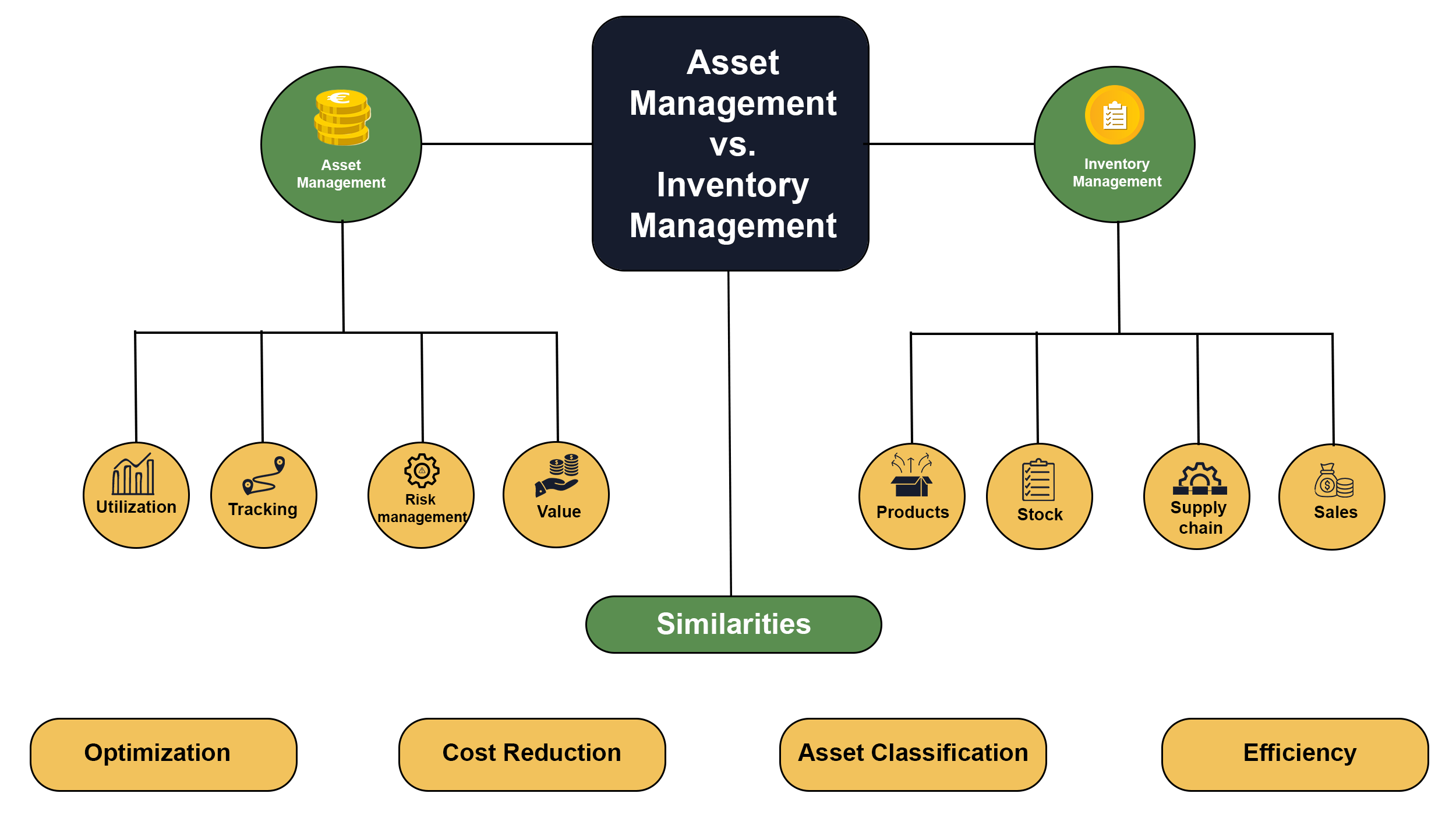In the world of finance and accounting, assets and inventory play a crucial role in the success of businesses. While both assets and inventory contribute to a company’s financial health, they represent different aspects of its operations and are treated differently in financial statements.
Assets:
An asset is something that a business owns and uses to generate income or could be converted into cash. A company may own various assets, like land, machinery, and vehicles. Assets are financial resources that a company owns or manages and have the potential to provide benefits in the future.
Inventory:
The word “inventory” describes the variety of goods or products that a business keeps on hand for producing, marketing, or delivering to customers. It is like a company’s inventory of items required to conduct business. On a company’s financial records, inventory is considered an asset.
What are the advantages of Asset Management?
Asset Lifecycle Management: Effective asset management involves managing assets throughout their lifecycle, from acquisition to disposal. It helps in optimizing asset lifespans, planning for replacements or upgrades, and maximizing the value derived from assets over time.
Improved Risk Management: Asset management makes it easier to identify and reduce risks effectively. Companies can reduce the risk of unexpected failures, accidents, or disruptions by keeping correct records, carrying out routine checks, and putting safety measures in place.
Enhanced Asset Tracking and Visibility: Asset management systems provide real-time visibility into asset locations, statuses, and usage patterns. This improves tracking, reduces losses, and enables efficient asset allocation, leading to better resource optimization.
Enhanced Decision-Making: Asset management enhances decision-making by providing valuable information and data about assets. This helps decision-makers make informed choices, optimize resource allocation, and plan for the long term effectively.
Cost Reduction: Asset management reduces costs by efficiently tracking and maintaining assets, minimizing downtime, repair expenses, and unnecessary purchases, resulting in significant savings for the company.
What are the advantages of Inventory Management?
Cost Control: Inventory management controls costs by minimizing excess inventory and avoiding stock shortages. It finds the right balance, reducing storage costs and meeting customer demand efficiently.
Enhanced Customer Service: With effective inventory management, companies can meet customer demands promptly. By maintaining optimal inventory levels and having accurate visibility into stock availability, businesses can fulfill orders in a timely manner, reducing lead times and enhancing customer satisfaction.
Accurate demand planning: Inventory management enables accurate forecasting and demand planning, reducing the risk of overstocking or stockouts and optimizing production schedules and resource allocation.
Improved cash flow: Effective inventory management reduces extra stock, improving cash flow and better using funds for business needs. This helps free up capital.
Similarities between Asset Management and Inventory Management:
There are many parallels between asset management and inventory management in terms of methods and objectives. Both require the control of material resources inside an organization. To enhance returns and reduce costs, businesses strategically give priority to improving efficiency, thereby driving financial performance. Efficient management and analysis of asset and inventory data require properly arranged planning and tracking systems. Cost control, a common objective, easily reduces ineffective spending and improves financial performance. Inventory management is necessary for assuring constant presence and confidence. Asset management, in turn, provides the necessary consistency to encourage efficient corporate operations and sustainable financial growth. Together, these practices ensure the organization’s success, stability, and competitiveness.
Contact us today to learn more. You can request a 15-minute live demo with one of our team members here or sign up for a 30-day free trial account here.



